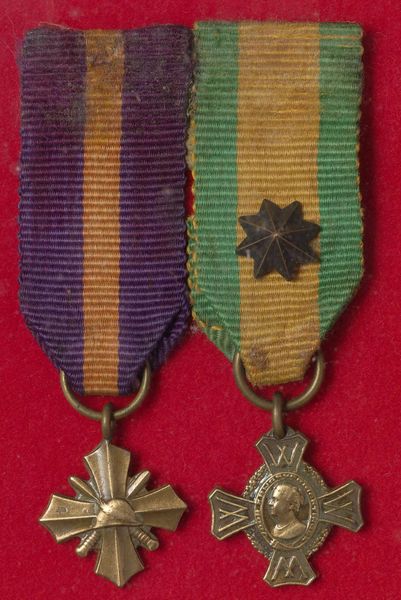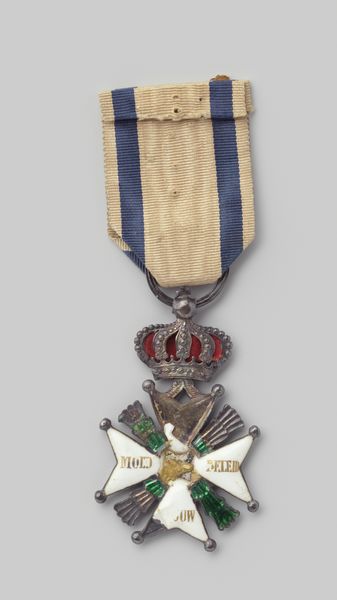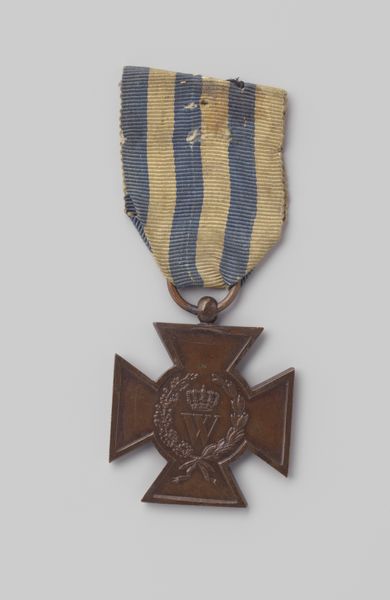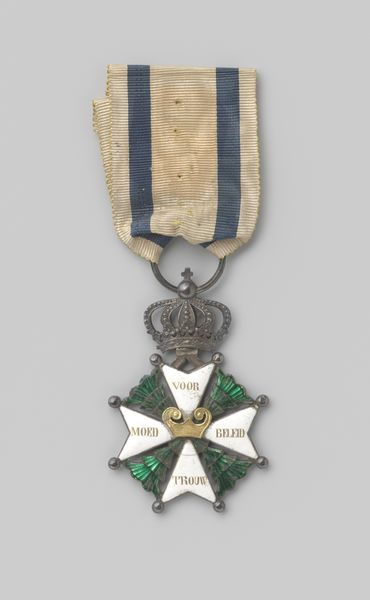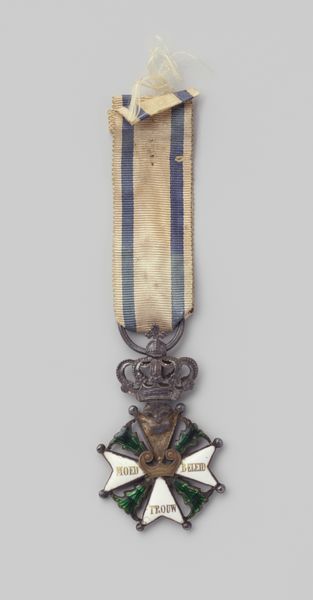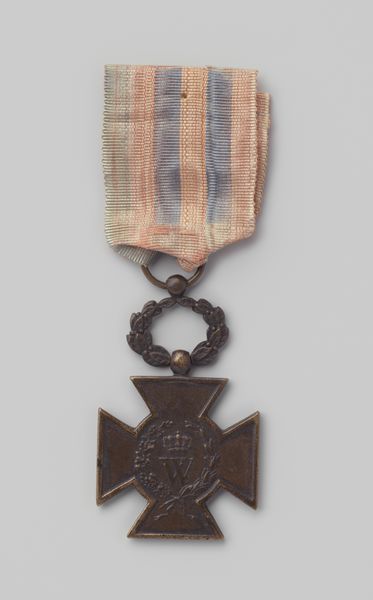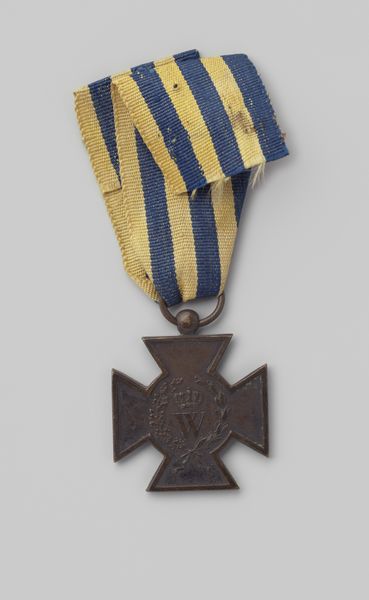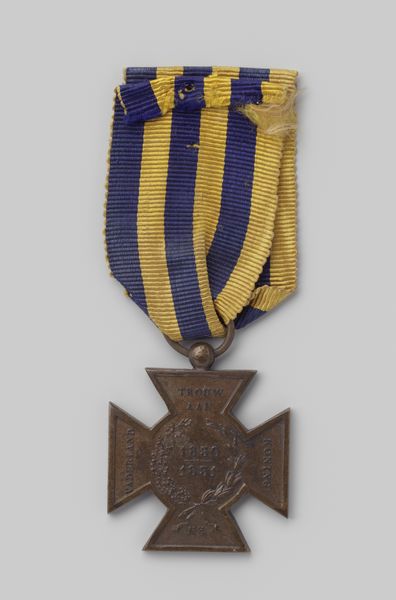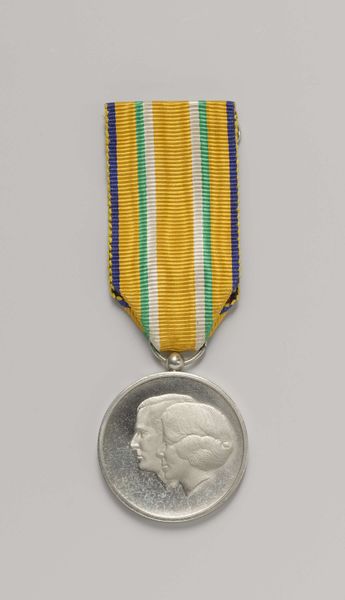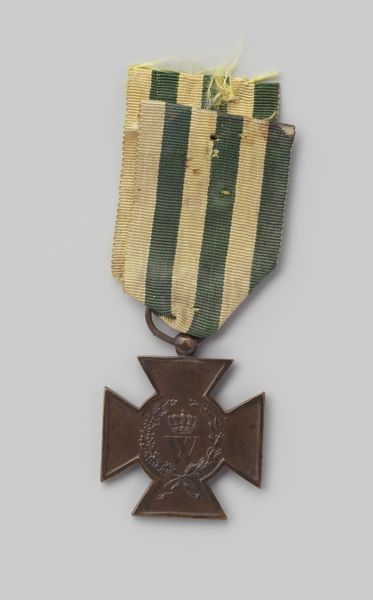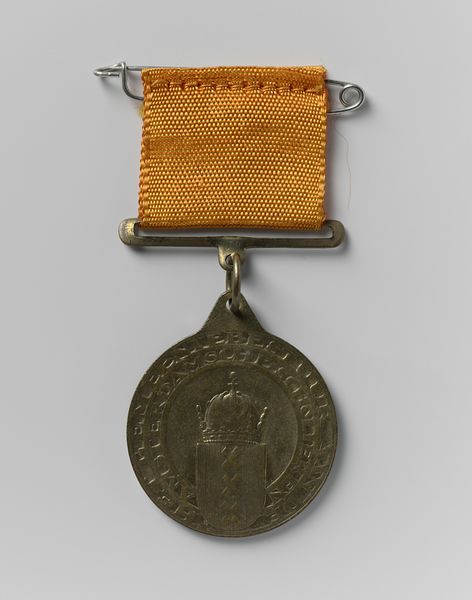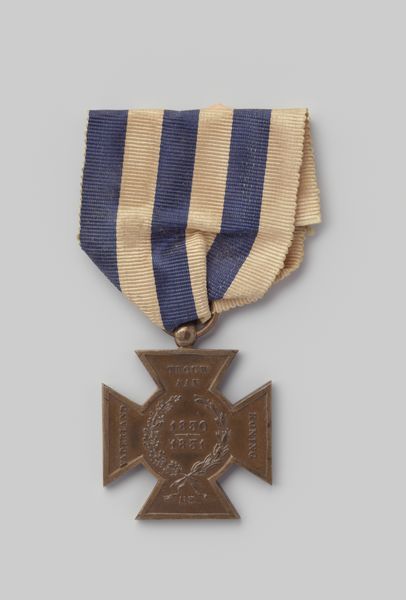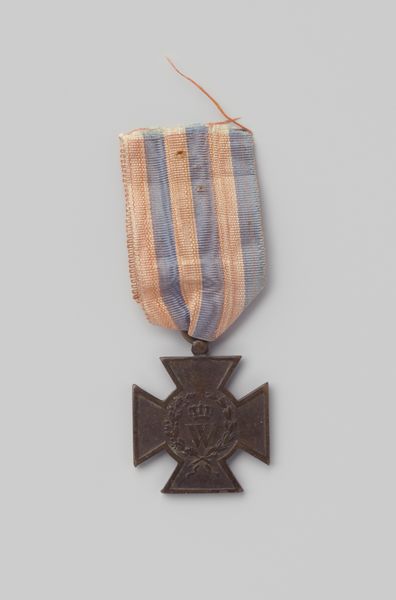
metal, relief, sculpture
#
metal
#
relief
#
sculpture
#
history-painting
Dimensions: length 9.5 cm, width 4 cm, height 25.7 cm, width 33 cm, depth 4.5 cm
Copyright: Rijks Museum: Open Domain
Editor: Here we have the "Nederlands Verzetsherdenkingskruis," or Dutch Resistance Commemorative Cross, estimated to be from between 1945 and 1999. It’s a metal relief sculpture. I find its stark imagery quite moving. What stands out to you when you look at this piece? Curator: The medal’s imagery is certainly powerful, isn’t it? Looking at this cross, it's essential to remember the specific historical context. Consider the role of commemorative objects within national narratives: Who decides who is remembered and how? The very creation and awarding of such a medal are deeply political acts. Editor: So, it’s not just about individual heroism? Curator: Not entirely. While it acknowledges individual sacrifice, it simultaneously shapes collective memory. The dates 1940-1945 point directly to the German occupation of the Netherlands. But what does the inclusion of the crown at the top suggest about the nature of that resistance? Is it advocating for a return to the pre-war status quo or envisioning something different? Editor: I hadn’t thought about it that way. The crown does seem to connect the resistance to the monarchy. And what about the text “De Tyranny Verdryven?” Curator: Exactly! "To drive out tyranny." It explicitly frames the Dutch resistance as a fight against oppression. But, by focusing on tyranny, what other aspects of the war, such as colonialism or economic motives, might be obscured? The medal serves as a focused narrative, solidifying a particular understanding of the Dutch wartime experience. Editor: I see. So it's about remembering, but also about shaping how we remember. That's really changed how I see it. Curator: Precisely. Examining this piece allows us to reflect on the power dynamics inherent in commemorative objects. They don’t simply reflect history; they actively construct it.
Comments
No comments
Be the first to comment and join the conversation on the ultimate creative platform.
